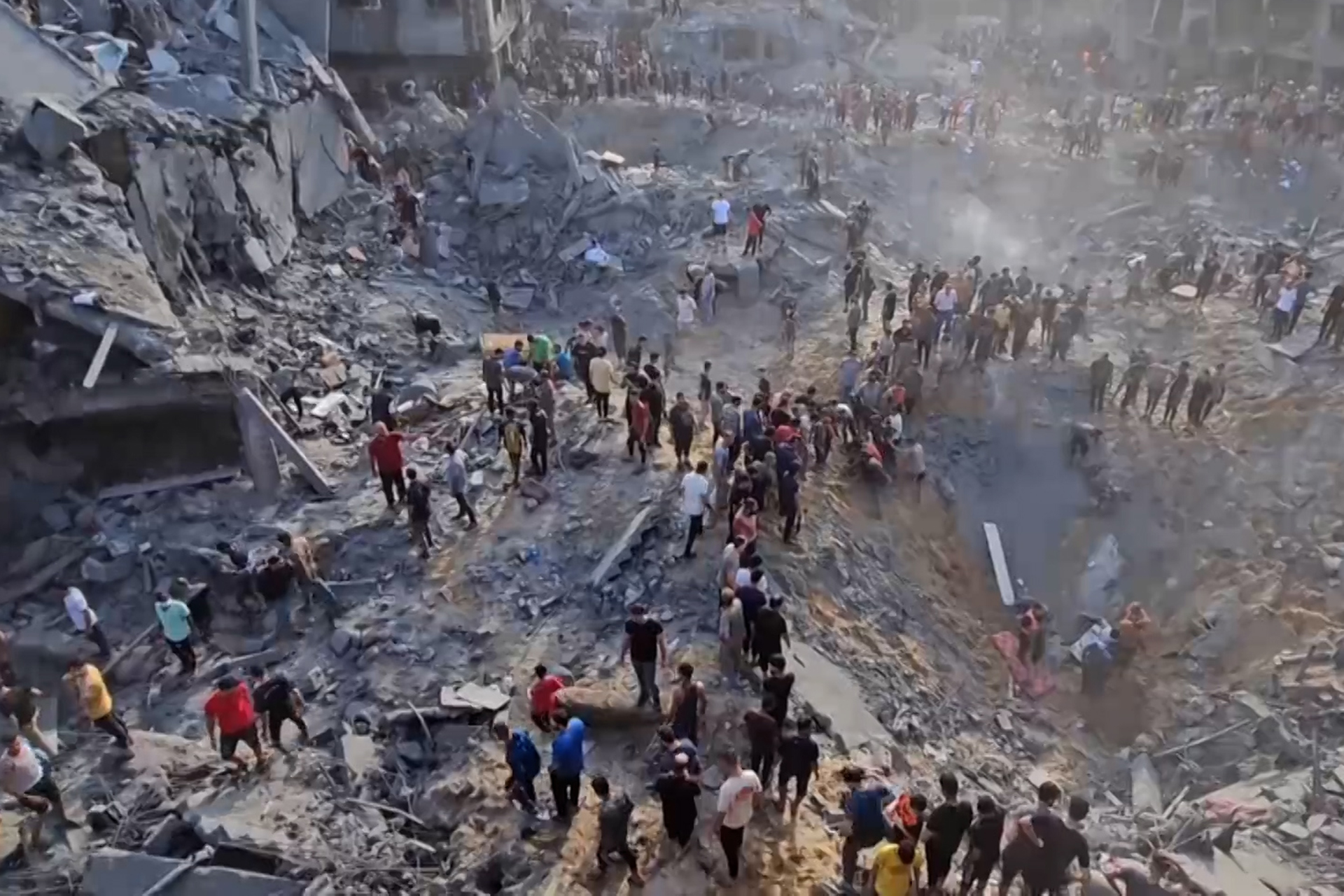Israel used at least two 907-kilogram bombs during Tuesday's airstrike on Jabalya camp, a densely populated area north of Gaza City, according to experts and the newspaper's analysis of satellite imagery, photos and videos.
Hospital officials in the area said dozens of civilians were killed and hundreds wounded in the strike, while Israel said it targeted a Hamas commander, as well as an underground tunnel network used to hide weapons and fighters.
Hamas denied the allegations, saying that "the Zionist terrorist enemy's talk about the presence of a Hamas leader in Jabalia, the site of the massacre, is false and baseless."
Image showing the display of craters created by Israeli bombs in Jabalia (New York Times on Maxar Technologies)
Israel's use of such bombs, the second-largest type in its arsenal, is not unusual, and their size is generally the largest used by most militaries on a regular basis. They can be used to target infrastructure, but their deployment in a densely populated area such as Jabalia has raised questions about the proportionality of whether Israel's intended targets justify the civilian death toll and the destruction caused by its strikes.
Evidence and analysis shows that the two craters from the impact of the impact were about 14 meters wide, dimensions consistent with the underground explosions that this type of weapon may produce in light sandy soils, according to a technical study conducted by Armament Research, a munitions research consultancy, in 2016.
Multiple craters from airstrikes in Jabalia camp can be seen in satellite imagery taken on Tuesday (New York Times on Maxar Technologies)
Mark Garlasco, one of the study's authors, said the bombs may have had a "delay fuse" that delays detonation by fractions of a second after penetrating the roof or building so that the destructive power of the blast reaches a greater depth. These bombs are usually equipped with guidance kits called combined direct attack munitions, converting them from indiscriminate bombs to GPS-guided precision weapons.
The newspaper noted that 83 countries, including the United States, not including Israel, have signed a commitment to refrain "as appropriate" from the use of explosive weapons in populated areas, "because of the potential harm to civilians."
"Israel's continued bombardment of Gaza, including the attack on Jabalya, amplifies this concern many times over," said Omar Shakir, Israel and Palestine director at Human Rights Watch.

